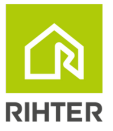Challenges
When it comes to technology, Rihter never stands still. The company had long been using BIM tools for wood-frame building design and automated production but knew more powerful and efficient solutions were now available.
In particular, data was being lost moving between architectural and structural models and CNC machines, forcing the team to duplicate a lot of work.
The goal: Bring all the pieces of the process together in Autodesk® Revit®.
Client Profile
RIHTER Prefabricated Houses makes low-energy homes as well as commercial and holiday buildings. Tailoring designs for every client and using the best current technologies have helped the firm, established in Slovenia in 1990, expand to Italy, France, Switzerland, Germany, Austria, and Croatia.

“We wanted to optimise our workflow and use a single BIM environment to do it. We still lacked framing software based in Revit that was at least as capable as what we were then using with some additional benefits to justify the transition,” explains Marcel Kuferšin, Head of BIM Coordination & Development.
)
Impact
When Rihter’s team started using the Agacad software, it immediately noticed how much easier it was to manage architectural changes.
“Interoperability is the word. It solved the core problem of model redrawing, loss of data when going from the architectural to the structural phase, work duplication,” Kuferšin says, stressing that the company “could now build a project in its entirety in just one model from start to finish.”
)
)
)
)
)
Kuferšin says that support from Agacad exceeded expectations. “Training wasn’t just a ‘how to’ presentation but rather an in-depth explanation of how the framing software and Revit actually work. That allowed us to further tweak the process ourselves.” He also values Agacad’s eagerness to incorporate the firm's needs into ongoing software development. “We constantly change and improve, and it’s great to have a partner that evolves with us and even spurs us to evolve.”
)